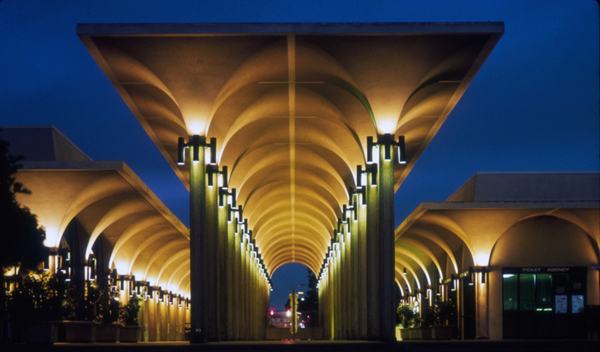Contemporary architecture tends to get a bad rap in San Diego. The city lost another piece of contemporary architecture just last month when one of San Diego State University’s most iconic buildings—the historic Aztec Center designed in 1964 by Mosher & Drew Architects—was leveled. For its new student center, SDSU will seek comfort in the banality of Mission Revival style.
For Angeles Leira, curator of the La Jolla Historical Society’s lecture series “Contemporary Architects Making History,” San Diego’s preference for the ornamentation of revivalist styles reflects a lack of exposure to good modernist architecture. She aims to change that by offering this lecture series to educate the public and inspire more public dialogue about what constitutes “good” architecture in San Diego.
“People that focus on preserving historic architecture get into the trap of thinking that only the old is valuable,” explains Leira, an architect who works for the city of San Diego. ”And I wanted to show how contemporary architecture can also be beautiful and enhance our environment.”
Started in February of this year, three lectures remain in the series of 10, presented monthly at 7 p.m. Thursdays in the historic Wisteria Cottage (780 Prospect St. in La Jolla). The next lecture, scheduled for Sept. 22, will feature Rob Quigley, owner of Rob Wellington Quigley Architecture, Planning & Preservation and the architect who designed the new Downtown library, the San Diego Children’s Museum and UCSD’s Student Services Center. The series continues on Oct. 27 with a lecture by Laura DuCharme Conboy of DuCharme Architecture and concludes on Dec. 15 with a lecture by James Alcorn, architect emeritus of Alcorn & Benton Architects.
One common concern the series will address is how to strike a balance between historic preservation and contemporary style. And what constitutes a “historic” building is often up for grabs. As Leira notes, even the people in charge don’t always embrace mid-century modernist architecture in San Diego.
“We recently had modernist buildings that came before the historic resources board, and they said, ‘Oh that’s not historic. It’s not perceived as historic if it doesn’t have the ornamentation and bric-a-brac we are used to.’”
Leira hopes the lectures will help San Diegans learn more about the practices of architects so that they can “begin to separate good architecture from bad, discriminate between excellence and work that is not well thought-out and well done.” While we might consider good architecture to be subjective, Leira believes that knowledge and exposure to new architecture can sharpen our sensitivity to excellence in design.
“It’s something that you feel, and because it is something that you feel, it is branded as something that is subjective,” Leira notes. “But there are very objective reasons why it is good architecture. It has a scale, a play of materials and usability that is obvious. Everything comes together in a very easy way.”
And Leira hopes that greater sophistication and dialogue among architects, historians and the public about those objective factors can help San Diegans create and maintain a more beautiful and satisfying built environment.
“It’s like everything else, it’s about having exposure and knowing something about it,” she said.
____
This article was originally published in San Diego CityBeat on 21 Sept 2011.

